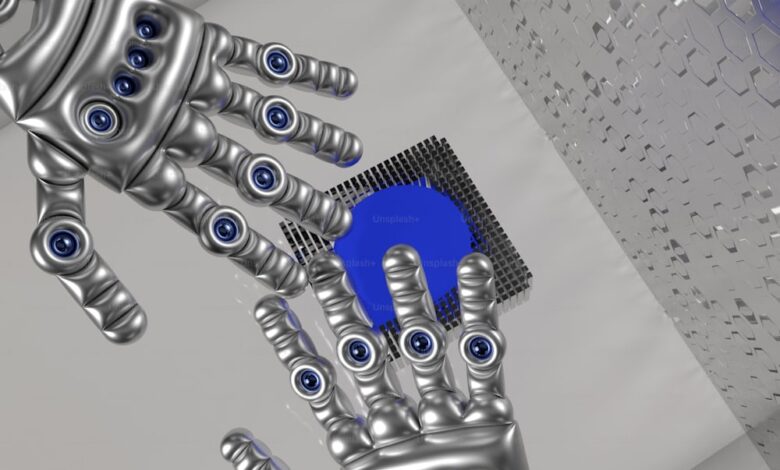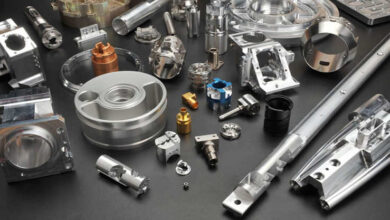Object Detection with Machine Vision: Transforming Automation and Robotics

Automation and robotics have evolved rapidly in recent years, driven by advancements in machine vision systems. One of the most critical capabilities of these systems is object detection, a fundamental technology enabling machines to “see” and respond to their environment with unprecedented accuracy. This has revolutionized industries from manufacturing to logistics, where precise detection, classification, and tracking of objects are essential for efficiency and quality control.
This article delves into how machine vision systems are transforming automation and robotics through object detection, defect detection, surface defect detection, and object counting, ushering in the next era of smart manufacturing and industrial automation.
What is a Machine Vision System?
A machine vision system is an integrated setup of hardware and software that uses cameras, sensors, and image processing algorithms to capture, analyze, and interpret visual data. Unlike human vision, machine vision systems provide faster and more accurate results, automating tasks that require high precision, such as quality control, object detection, and defect identification.
In the context of automation and robotics, machine vision systems serve as the “eyes” of robots, enabling them to identify, classify, and interact with objects on production lines or in logistics. This technology is vital for tasks like robotic picking and placing, assembly, and packaging.
Object Detection: The Core of Automation
At the heart of machine vision systems is object detection, which refers to the ability of a machine to identify and locate specific objects in its environment. This capability is essential for automation, as it enables robots and machines to interact intelligently with their surroundings.
Object detection is used in various industries to improve efficiency, accuracy, and productivity:
- Manufacturing: Robots on assembly lines use object detection to identify parts, tools, and components, ensuring they are placed in the correct locations and orientations. This not only speeds up production but also minimizes errors.
- Logistics: In warehouses, machine vision systems with object detection capabilities are used to identify, sort, and track packages, ensuring they are correctly routed and processed without human intervention.
- Healthcare: Object detection in robotics is used for precision tasks such as surgery, where machines need to accurately identify and manipulate instruments and tissues.
In all these applications, object detection is pivotal in enabling automation systems to operate autonomously, reducing the need for human oversight.
Defect Detection for Quality Assurance
In industries such as manufacturing and electronics, defect detection is critical to ensuring that products meet stringent quality standards. Machine vision systems equipped with defect detection algorithms can scan objects in real-time and identify flaws that may not be visible to the naked eye. This includes detecting imperfections such as cracks, dents, or misalignments.
For example, in automotive manufacturing, machine vision systems can inspect each component as it moves down the production line, ensuring that no defective parts are assembled into the final product. In the electronics industry, defect detection is used to identify faulty circuit boards, preventing defective products from reaching the consumer.
By automating defect detection, companies can drastically reduce product recalls and ensure consistent product quality, enhancing their reputation and reducing costs associated with rework and scrap.
Surface Defect Detection: Ensuring Flawless Surfaces
Surface defect detection is a specialized application of machine vision systems that focuses on identifying imperfections on the surface of objects. This is especially important in industries where the appearance of a product is a key factor in customer satisfaction, such as consumer electronics, automotive, and packaging.
Surface defects can include scratches, dents, discoloration, and deformations. Even minor surface flaws can render a product unusable or undesirable in certain industries. For example, in the production of smartphone screens or car body panels, surface defect detection ensures that only flawless products make it to market.
Machine vision systems with surface defect detection capabilities provide non-contact, high-speed inspection of surfaces, identifying defects that human inspectors might miss. This automation improves quality control, reduces waste, and ensures that defective products are removed from the production line before they are packaged or shipped.
Object Counting: Accuracy in Automation
In many industries, precise object counting is essential for ensuring correct quantities are packaged, shipped, or assembled. Machine vision systems excel at object counting, using advanced algorithms to accurately count items at high speeds, even in challenging environments.
For example, in food processing, object counting is used to ensure that the correct number of items—such as biscuits, candies, or pills—are packaged in each container. In logistics, object counting helps track inventory by counting the number of items passing through conveyor belts or robotic picking systems.
Object counting plays a crucial role in reducing overfilling or underfilling, which can lead to customer dissatisfaction or regulatory issues. By automating object counting, companies can ensure greater accuracy, reduce manual intervention, and increase the overall efficiency of their operations.
Machine Vision in Robotics and Automation: The Synergy
As machine vision systems continue to evolve, they are increasingly integrated into robotic systems, allowing robots to perform tasks that were previously impossible or highly error-prone. The combination of object detection, defect detection, surface defect detection, and object counting creates a powerful tool for automating complex processes across industries.
- Pick-and-Place Robots:
In manufacturing and warehousing, robots equipped with machine vision systems are used to pick up objects from a conveyor belt or bin and place them in specific locations. Object detection enables these robots to identify the correct items, while defect detection ensures that only non-defective parts are selected. In the automotive and electronics industries, pick-and-place robots are essential for assembling components quickly and accurately. - Collaborative Robots (Cobots):
Collaborative robots, or cobots, work alongside human operators, performing tasks such as assembling, packing, or sorting items. Machine vision systems help cobots identify objects and detect defects in real time, ensuring they operate efficiently and safely around human workers. - Autonomous Mobile Robots (AMRs):
Autonomous mobile robots are widely used in logistics and warehousing to transport goods from one location to another. Machine vision systems enable AMRs to detect obstacles, identify objects, and navigate complex environments. Object detection helps AMRs locate items for transport, while surface defect detection ensures that packages are undamaged before delivery. - Inspection Robots:
Inspection robots equipped with machine vision systems are used to inspect infrastructure, pipelines, and manufacturing facilities for defects or damage. Defect detection algorithms can identify cracks, corrosion, or leaks, enabling preventive maintenance and reducing the likelihood of costly repairs or downtime.
The integration of machine vision systems with robots and automation tools is not only increasing productivity but also enabling smarter, more flexible production processes that can adapt to changing demands.
Benefits of Machine Vision Systems in Automation
The adoption of machine vision systems in automation offers numerous benefits, transforming industries and enabling companies to stay competitive in a fast-evolving marketplace:
- Increased Efficiency:
Machine vision systems can process large volumes of data quickly and accurately, reducing the time required for tasks such as object detection, defect detection, and surface inspection. This leads to faster production times and higher throughput. - Enhanced Accuracy:
By automating tasks such as object counting and defect detection, machine vision systems minimize human errors, improving the overall accuracy of operations and reducing waste. - Cost Savings:
Automating repetitive tasks with machine vision systems reduces the need for manual labor, lowering operational costs. Additionally, early defect detection prevents defective products from being assembled or shipped, reducing the cost of recalls and rework. - Consistent Quality:
Machine vision systems ensure that all products meet strict quality standards by detecting defects early in the production process. This leads to more consistent product quality and fewer customer complaints.
As the backbone of automation and robotics, machine vision systems are revolutionizing industries by providing advanced capabilities such as object detection, defect detection, surface defect detection, and object counting. These systems are enhancing productivity, improving product quality, and enabling smarter, more efficient production processes.
The integration of machine vision systems into automation will continue to grow, driving innovations across manufacturing, logistics, healthcare, and beyond. As industries embrace Industry 4.0, machine vision will play an ever-increasing role in shaping the future of automation, unlocking new possibilities for robotics and smart manufacturing.
Keep an eye for more news & updates on Tech Pro Magazine!





